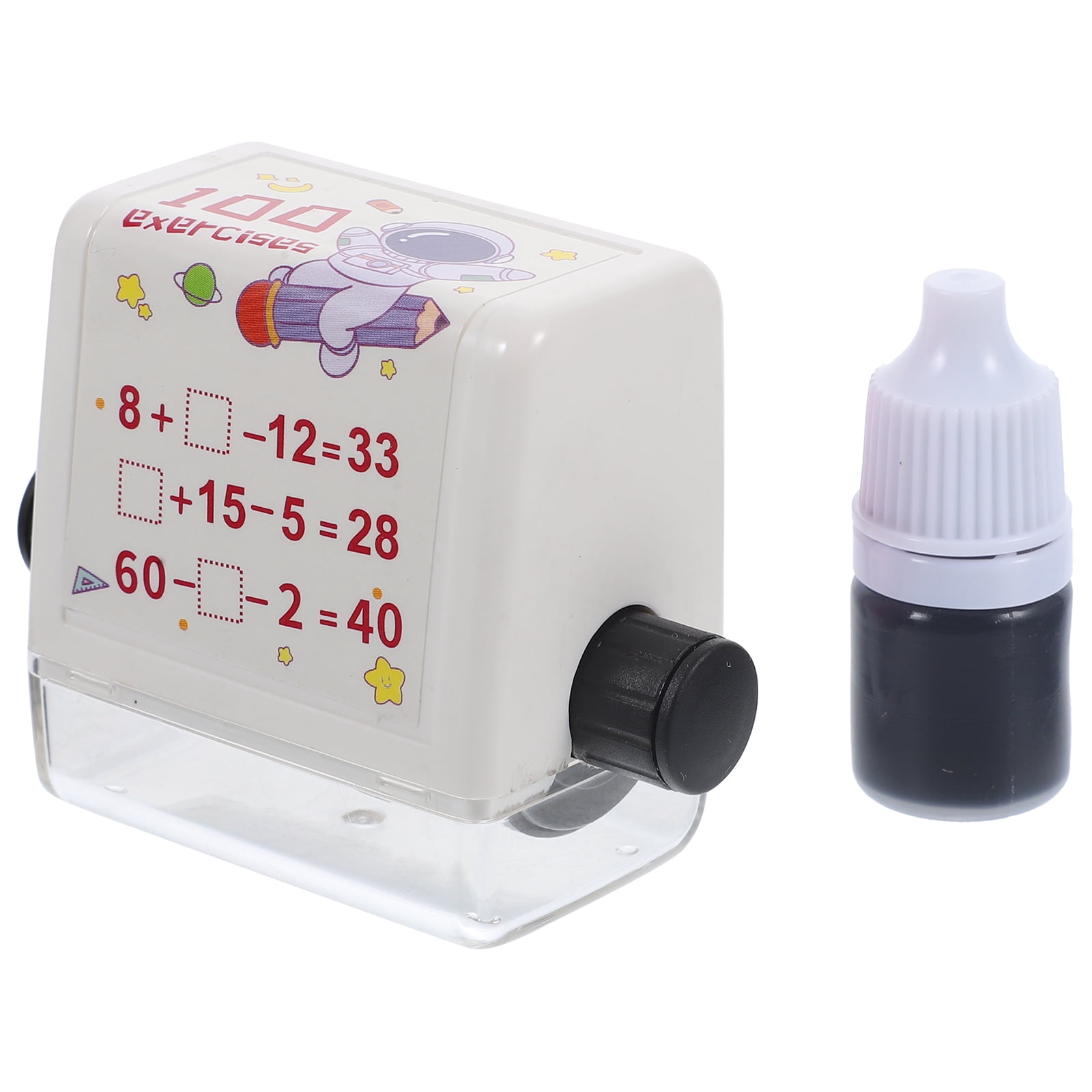what is Math Stamp Roller
A Math Stamp Roller is an educational tool designed to help students and teachers easily create math-related patterns, equations, and illustrations on paper or whiteboards. The roller typically features a rubber or silicone stamp with various math symbols, shapes, and designs that can be rolled across a surface to print multiple images or patterns in a single motion.




Key Features:
- Multiple Designs: Math stamp rollers often come with a variety of math symbols, such as addition and subtraction signs, multiplication and division symbols, geometric shapes, and even graphs or number lines.
- Easy to Use: The design of the roller allows for quick and efficient stamping, making it a time-saving tool for teachers when preparing classroom materials or for students practicing math problems.
- Encourages Engagement: The fun and interactive nature of stamp rollers can make learning math more enjoyable, helping to engage students in activities like practice exercises, games, or creative projects.
- Versatile Application: Math stamp rollers can be used on various surfaces, including paper, cardstock, or whiteboards, making them versatile for different learning environments.
- Durable Material: Most stamp rollers are made from sturdy materials that can withstand frequent use, ensuring they last for multiple school years.
- Promotes Creativity: In addition to solving math problems, students can use stamp rollers to create visual representations of mathematical concepts, enhancing their understanding of the subject.
Math stamp rollers are particularly useful in classrooms for teachers to demonstrate concepts, provide practice opportunities, and make math more accessible and engaging for student
benefits of Math Stamp Roller
Here are the benefits of using a Math Stamp Roller:
- Time Efficiency: Math stamp rollers allow educators to quickly create multiple math symbols or patterns in one motion, saving time during lesson preparation or classroom activities.
- Engagement and Motivation: The fun and interactive nature of stamping can make math more enjoyable for students, increasing their interest and motivation to participate in math-related activities.
- Enhanced Understanding: By visually representing mathematical concepts, students can better grasp and internalize abstract ideas. Stamping allows them to see patterns and relationships in a concrete way.
- Variety of Applications: Math stamp rollers can be used for various activities, including practicing arithmetic, creating math worksheets, decorating math journals, and illustrating concepts like fractions, geometry, and number lines.
- Promotes Creativity: Students can use stamp rollers to design their own math problems, games, or artistic representations, fostering creativity while learning.
- Improved Fine Motor Skills: Using a stamp roller helps students develop fine motor skills and hand-eye coordination, which are important for writing and other tasks.
- Easy to Use: Math stamp rollers are user-friendly, requiring minimal instruction. This makes them accessible for young learners and can be used independently or in group settings.
- Durable and Long-Lasting: Typically made from high-quality materials, math stamp rollers can withstand regular use, making them a worthwhile investment for classrooms.
- Versatile for Different Learning Styles: The visual and tactile aspects of stamping cater to various learning styles, making it easier for students who may struggle with traditional teaching methods.
- Collaboration and Group Work: Math stamp rollers can facilitate collaborative learning by allowing students to work together on projects or problems, promoting teamwork and communication skills.
In summary, Math Stamp Rollers are effective educational tools that enhance engagement, creativity, and understanding of math concepts while promoting fine motor skills and efficiency in classroom activities.
Demerits of Math Stamp Roller



